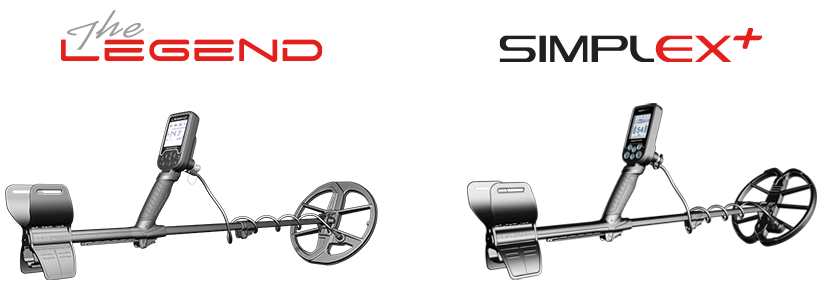professor-tones:
Do you dig crown caps with the 5 inch Monte. I have the 5 inch coil but have not had time to get out with it yet.
Crown Caps, more often referred to as Bottle Caps, are seldom a nuisance for me. back in the early days of Coin Hunting, when coins were so plentiful and discarded trash was less than we encounter today, Bottle Caps were perhaps the most frequently encountered annoying ferrous trash target for me. When I lived we had a lot of frequently-used parks, and most of them had a covered picnic bowery or two, and ball fields with bleachers, not to mention tall trees with ample shade for summer-time picnics and such. For me, this started in the latter '60s and early '70s when I was using BFO's and TR's and before I had Discrimination, but it was easy to learn to audibly classify those pesky Bottle Caps.
As detector circuitry and frequencies changed, Discrimination was added, and we moved from analog to digital circuitry, we note that Bottle Caps became a bigger frustration for many Hobbyists because the more modern detectors didn't / don't reject them as cleanly as the early TR-Disc. models. But I didn't use variable Discrimination to reject them as long and the detector let me just audibly classify them as problem ferrous trash like I did in those much earlier days. And generally I can, so NO, I don't dig Bottle Caps very often at all.
Most of the time, Bottle Caps are more recent discards and can be found shallower, such as surface to 3" or perhaps to 4", and since most are closer to the search coil it is rather easy to simply use search coil sweep techniques to help 'classify' them as a ferrous-based target and simply ignore them. About forty-eight or forty-nine years ago I coined the term 'Edge-Pass Rejection', or 'EPR', to describe this method I used with my conventional TR's to audibly help ignore recovering them. Just yesterday I spent just short of 2 hours hunting our local city park around the covered picnic area and was only fooled once by a Bottle Cap. I was using my Simplex+ w/11" DD coil and just going after coins since we had a nice break in the weather. One Bottle Cap in about 1 Hr. 45+ Minutes isn't bad, and that crushed or folded Bottle Caps was too close to a non-ferrous targets for me to audibly classify for sure, so it got dug,
Now to search coils and Bottle Caps. I can use either Concentric or Double-D, and generally the smaller the coil the easier it is to take on that problem trash. On my CoRe and Relic I have their 'OOR' and 5" DD coils mounted because they didn't make a Concentric coliform them.. Most urban Coin Hunting places where I most often encounter Bottle Caps I'll be using a smaller ±5" coil, or preferring a good Concentric coil such as the Nokta / Makro 7". Due to the uniform EMF all around a Concentric coil it makes them much easier to handle with a coil sweep from any direction. But the 5" DD still does well because it is a smaller DD with a 'tighter' field to deal with.
EPR? Simple, and in recent years others have 'discovered' this technique and have used other descriptions using the 'toe or heel' of the coil. A lot of the results you get will depend on the make and models detector you're using and the audio response you hear. I generally search with very little Discrimination, usually set low enough to just barely accept iron nails, or if too annoyed I might just barely reject iron nails. Also I like to hunt in a 2-Tone or 3-Tone audio with the low-tone Iron Audio response. When you get a target that gives higher numeric VDI read-out, often similar to a US 10♂5 or 25¢ coin but still a little jumpy for a shallower target with a direct sweep with the coil's center-axis, just continue to make a shorter-length sweep across the target as you work the coil back towards you. The 'Edge-Pass' location can vary based on the search coil size and type, but if you sweep across the pinpointed sport about 1" in toward the center of the coil from the front edge and no longer get a good higher-tone response but, instead, hear the audio tone drop off to the Iron Audio low-tone that's the hint it is likely a Bottle Cap or other ferrus-based target.
Sometimes with a Double-D coil the 'EPR' spot might be at the front edge of the coil or outward to about 1", but you can easily learn this with different search coil types and sizes as well as the particular make / model detectors used. Use a coin and a Bottle Cap and place them on the floor or ground, then use your detector/coil of choice for typical Bottle Cap sites. Center-sweep both target specimens, then on each one continues a slow side-to-side sweep and draw the coil back towards you. Note the spot with reference to the search coils front tip or edge where the coin still responds positively then loses detection. Compare that with where the Bottle Cap starts to drop off or break up more and then shifts to the s good low-tone Iron Audio.
Even using a silent-search Discriminate mode and with a lower-end Disc. setting that is at or above iron range detection, and even only a single-tine detector, you can still quickly learn to audibly classify most Bottle Caps. And that 5" DD coil is what I use most often in heavily littered sites, with Bottle Caps and with much more ferrous junk than behaves like Bottle Caps, and I can ignore most of it based on the 'EPR' techniques.
Monte




 Best of success with yours.
Best of success with yours.